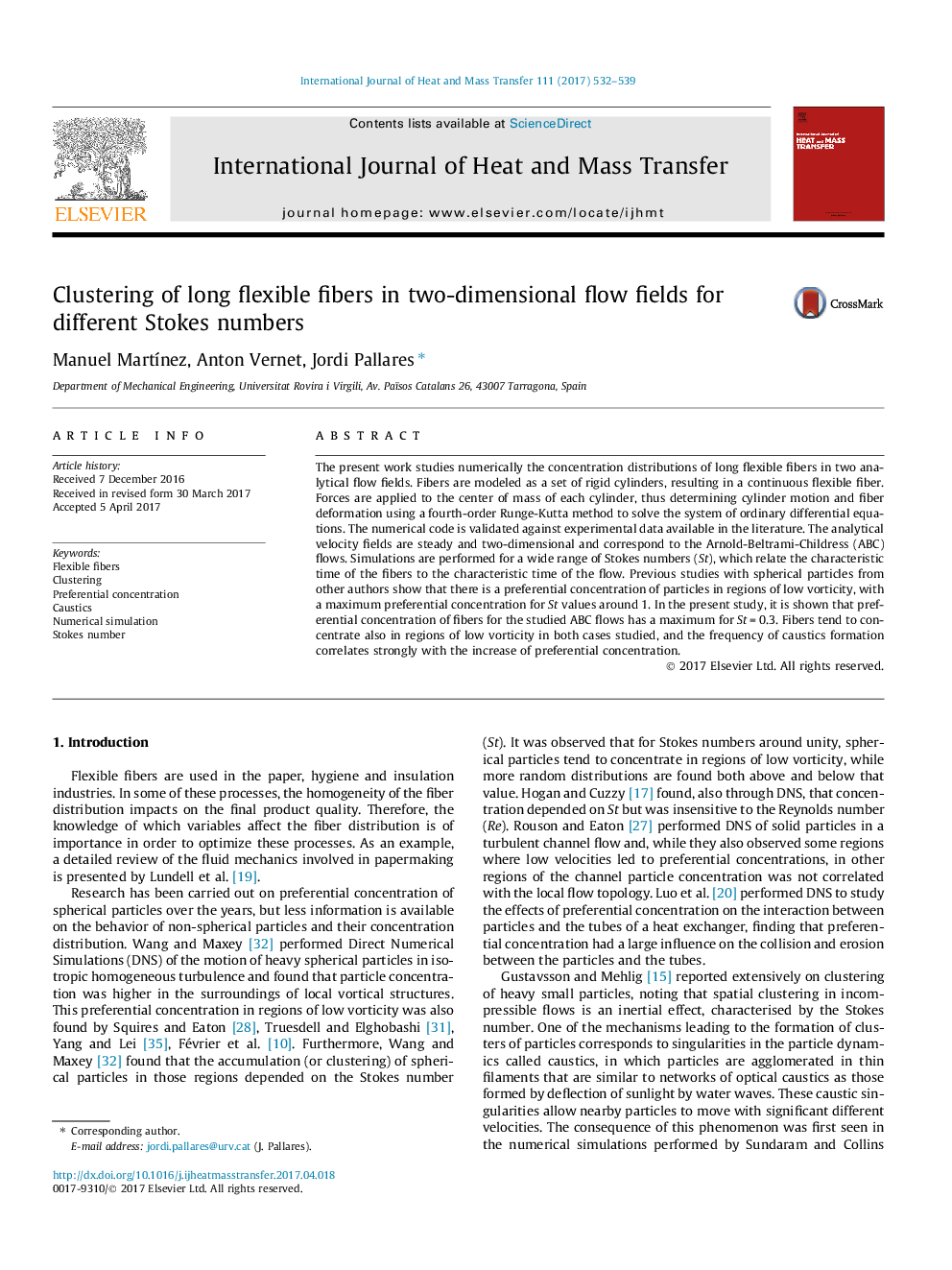| Article ID | Journal | Published Year | Pages | File Type |
|---|---|---|---|---|
| 4994093 | International Journal of Heat and Mass Transfer | 2017 | 8 Pages |
Abstract
The present work studies numerically the concentration distributions of long flexible fibers in two analytical flow fields. Fibers are modeled as a set of rigid cylinders, resulting in a continuous flexible fiber. Forces are applied to the center of mass of each cylinder, thus determining cylinder motion and fiber deformation using a fourth-order Runge-Kutta method to solve the system of ordinary differential equations. The numerical code is validated against experimental data available in the literature. The analytical velocity fields are steady and two-dimensional and correspond to the Arnold-Beltrami-Childress (ABC) flows. Simulations are performed for a wide range of Stokes numbers (St), which relate the characteristic time of the fibers to the characteristic time of the flow. Previous studies with spherical particles from other authors show that there is a preferential concentration of particles in regions of low vorticity, with a maximum preferential concentration for St values around 1. In the present study, it is shown that preferential concentration of fibers for the studied ABC flows has a maximum for St = 0.3. Fibers tend to concentrate also in regions of low vorticity in both cases studied, and the frequency of caustics formation correlates strongly with the increase of preferential concentration.
Keywords
Related Topics
Physical Sciences and Engineering
Chemical Engineering
Fluid Flow and Transfer Processes
Authors
Manuel MartÃnez, Anton Vernet, Jordi Pallares,
